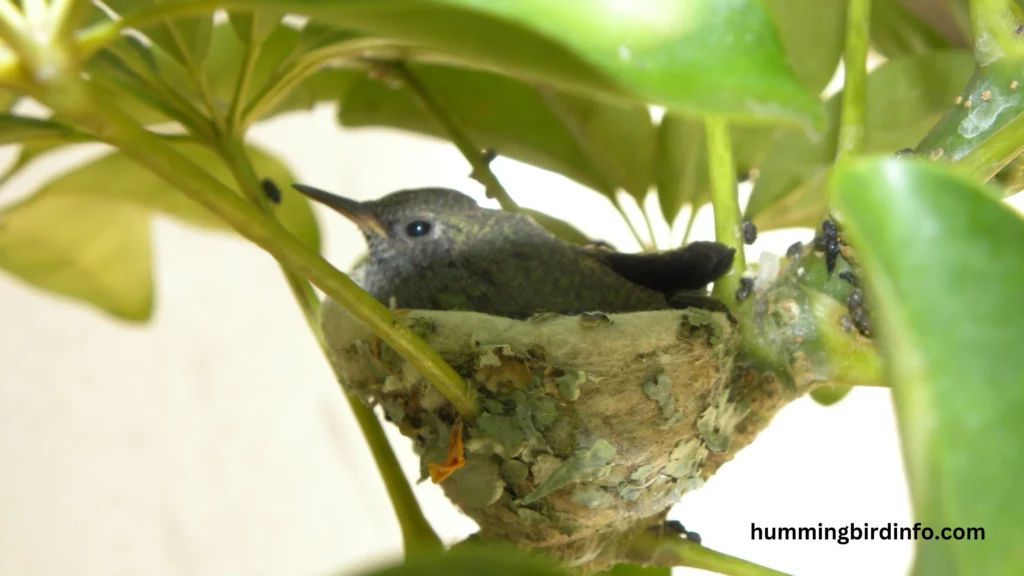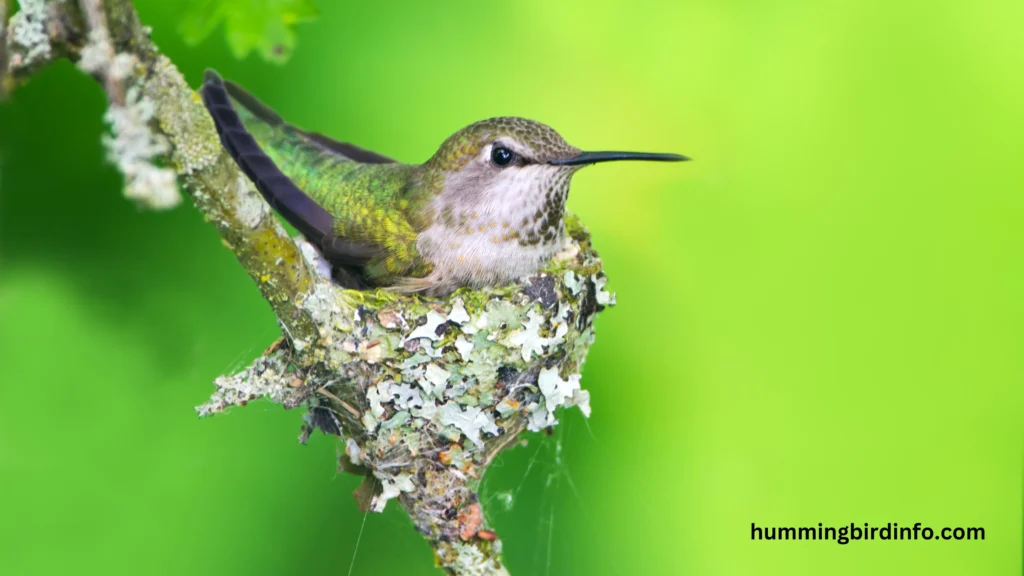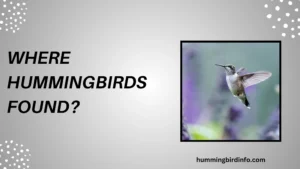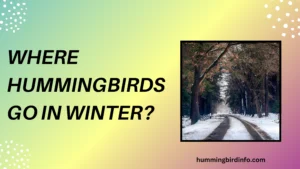Their wings beat faster than the eye can follow. Their feathers shimmer like jewels in sunlight. Hummingbirds are more than just backyard visitors—they’re living marvels, engineered by evolution to thrive in some of the most diverse and dramatic landscapes on Earth.
But have you ever wondered: Where do these tiny creatures actually live? Beyond the feeders and flowers in our gardens, hummingbirds occupy a vast array of habitats ranging from tropical jungles and misty cloud forests to dry deserts and high-altitude peaks.
Their distribution isn’t random—it’s shaped by millions of years of evolution, climate adaptation, and an intricate relationship with the plants they pollinate.
Understanding where hummingbirds live not only deepens our appreciation for their resilience and beauty, but it also offers insights into ecosystem health, biodiversity, and how we can better protect them in a rapidly changing world.
In this blog, we’ll explore the spectacular range of hummingbird habitats and uncover what makes each home unique for these tiny aerial acrobats.
Contents
The Neotropical Cradle
The Neotropics, especially Central and South America, are the ancestral home of hummingbirds and host over 300 species—more than any other region. These birds evolved here, diversifying to fill almost every ecological niche imaginable.
This region’s rich floral diversity and stable climate gave rise to an explosion of hummingbird forms, colors, and behaviors.
The Andes Mountains, in particular, are a biodiversity hotspot, offering vertical ecological layers that species like the Sword-billed Hummingbird (Ensifera ensifera) uniquely exploit.
In the Amazon rainforest, species like hermit hummingbirds zip through the dense understory, adapted to shaded, humid environments. In the cloud forests of Costa Rica, birds like the Violet Sabrewing thrive among epiphytes and mist-drenched blooms.
Expanding North – Hummingbirds in North America
Though most species are tropical, several types migrate north to temperate zones during the breeding season. These include well-known birds like the Ruby-throated Hummingbird (Archilochus colubris) and Rufous Hummingbird (Selasphorus rufus).

They nest in a variety of habitats such as deciduous forests, meadows, and even suburban gardens. What matters most is the availability of nectar-rich flowers and insects for protein, especially during nesting.
Migration patterns vary: some species travel thousands of miles from Mexico or even South America to reach summer breeding grounds in Canada or the U.S. Adaptations like fat storage and rapid refueling allow them to survive these long journeys.
Habitat Specificity – A Closer Look
Cloud Forests
These cool, humid, and misty forests are perched on mountain slopes between 1,000 to 3,000 meters. Species like the Booted Racket-tail flourish here, feeding on epiphytic plants and hanging flowers.
Rainforests
In rainforests like the Amazon, hummingbirds are often stratified by forest layer. Some inhabit the canopy, while others dwell in the shady understory. Their beak shapes evolve to match specific flowers, reducing competition.
High Altitude Zones
Hummingbirds like the Andean Hillstar (Oreotrochilus estella) live above 4,000 meters, where oxygen is thin and cold is constant. They survive with larger lungs, higher hemoglobin, and energy-efficient behaviors like torpor.
Drylands and Deserts
Desert dwellers such as the Costa’s Hummingbird survive on sparse blooms of desert sage and ocotillo. Their feeding is timed with ephemeral blooms and they can reduce activity during heat extremes.
Temperate Woodlands
Here, birds like the Black-chinned Hummingbird (Archilochus alexandri) rely on the seasonal blooms of flowering trees like buckeye and currant shrubs, adapting their nesting to match regional floral calendars.
The Importance of Flowers – Nectar and Beyond
Nectar Dependency
Nectar is the primary fuel for hummingbirds, giving them the quick energy needed for rapid wingbeats and long flights. A single bird may visit hundreds of flowers in one day.
Coevolution
Over time, hummingbirds and flowers have evolved together, resulting in species-specific interactions. Long-billed birds pair with tube-shaped flowers, while shorter-billed species go for open blooms.
Key Plant Species
In North America, Salvia, Penstemon, and Bee Balm are critical nectar plants. In the tropics, Heliconia, bromeliads, and Inga trees serve as hummingbird magnets.
Protein Matters Too
Especially during nesting, hummingbirds also consume small insects and spiders. These provide essential amino acids and support growth in developing chicks.
Human Impact and Conservation
Habitat Loss
Deforestation, urban sprawl, and agricultural expansion are wiping out the habitats hummingbirds depend on. This leads to population fragmentation and reduced genetic diversity.
Climate Change
Warming temperatures shift flowering seasons, causing mismatches between flower bloom and hummingbird arrival. This could impact migration success and reproductive timing.
Pesticides and Pollution
Chemical use affects both hummingbirds and the insect populations they rely on for protein. Even low levels of pesticides in nectar can cause neurological issues.
Conservation Solutions
Efforts include protected areas, flower-rich gardens, and eco-friendly farming. Planting native species and avoiding pesticides can turn backyards into mini-reserves for these pollinators.

Citizen Science
Bird lovers can join tracking programs like eBird and Journey North. These data help scientists monitor changes in migration patterns and species abundance.
Conclusion
Hummingbirds live in a stunning range of environments—from steamy rainforests and lofty mountaintops to your own flower-filled backyard. Their survival depends on a delicate balance of food, climate, and shelter.
These habitats reflect not just where they live, but how they live—as agile pollinators, territorial warriors, and resilient migrants. Understanding their homes means we’re one step closer to protecting their futures.
So the next time you see a hummingbird, remember: it’s a tiny traveler, shaped by a vast world. Let’s work to keep that world vibrant, blooming, and alive.
FAQs
1. What continents do hummingbirds live on?
Hummingbirds are found only in the Americas, from Alaska to Tierra del Fuego, with the greatest diversity in South America.
2. Do hummingbirds live in the desert?
Yes! Species like the Costa’s Hummingbird and Black-chinned Hummingbird thrive in desert regions by relying on seasonal blooms and adapted behaviors.
3. Where is the most common place to see hummingbirds?
Most people in the U.S. and Canada see hummingbirds in gardens, parks, and woodlands during spring and summer.
4. Do hummingbirds live in forests?
Yes, especially in rainforests, cloud forests, and temperate woodlands. They occupy different layers of the forest, from canopy to understory.
5. How do flowers affect where hummingbirds live?
Flower availability is critical. Hummingbirds live where they can find nectar-producing flowers, which influence their territories, migration routes, and nesting areas.
6. Can hummingbirds live in cities?
Absolutely. Urban areas with gardens, parks, and feeders can support hummingbirds if there’s enough nectar and insect prey.








